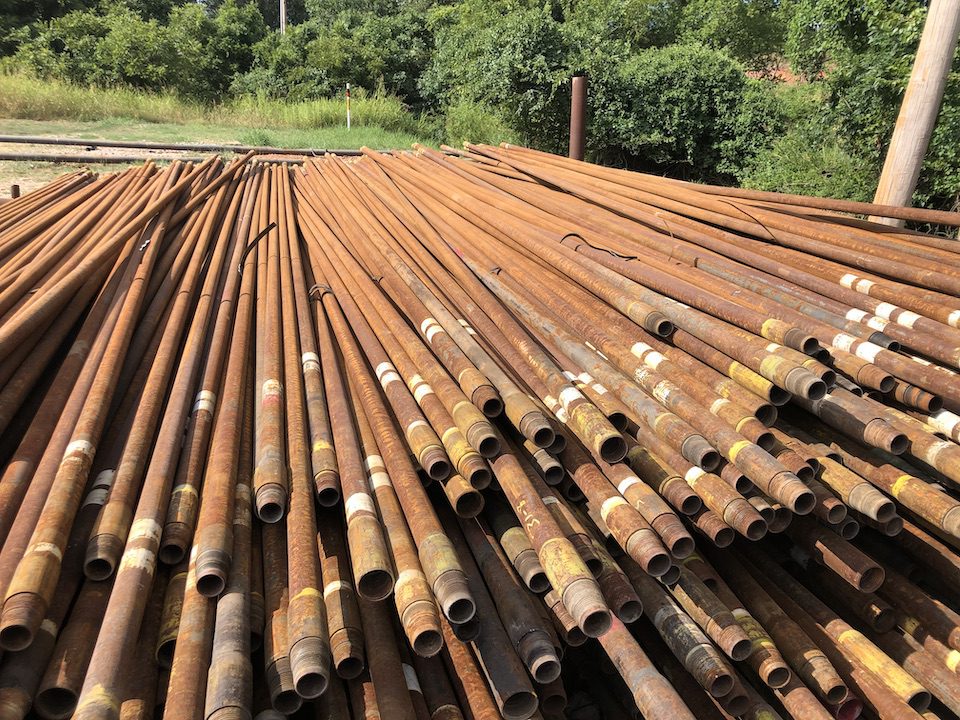800-764-7473
Local 208-324-2142

The gas and oil industry relies heavily on the robustness of pipes in its various operations. Among the essential components are oilfield pipes. These pipes play a pivotal role in diverse applications. It is crucial to learn the roles played by new and used oilfield pipes in production processes. These pipes help in the intricate gathering and distribution networks, drilling operations and various other vital reasons explained below.
In the oil industry, production processes demand pipes that can withstand the harsh conditions of well extraction. Used oilfield pipes, with their resilience and durability, find application in the extraction of gas and oil from reservoirs. These pipes ensure a seamless flow of hydrocarbons, facilitating efficient production.
Used oilfield pipes play a crucial role in gathering lines, collecting oil from multiple wells and transporting them to central processing facilities. Furthermore, distribution pipelines utilize these pipes to transport refined products like gasoline and diesel to users in industrial facilities as well as private use. The reliability and sturdiness of these pipes are paramount in maintaining a continuous and efficient distribution network.
Drill pipes, an integral part of drilling operations, create boreholes essential for gas and oil exploration. These pipes facilitate the circulation of drilling fluid and provide a way for the drill to go deeper. Both new and used oilfield pipes contribute significantly to the drilling process, ensuring its efficiency and success.
When it comes to the gas and oil industry, pipes are the lifeline for crude oil transportation, natural gas, and refined products. Transmission pipelines with extended diameters, often comprised of used oilfield pipes, transport these commodities from production fields to distribution centers. The strength and reliability of these pipes are crucial for maintaining the integrity of the transportation system.
Utilized in injection wells, used oilfield pipes assume a critical function in advanced recovery techniques. Their pivotal role involves transporting fluids—be it fluid or gas—into reservoirs of gas and oil, effectively heightening production. The durability inherent in these pipes ensures the seamless conveyance of injected fluids beneath the Earth’s surface, ultimately enhancing recovery rates for these valuable resources.
The distinctive challenges presented by offshore operations necessitate specialized solutions, and used oilfield pipes are custom-designed to meet these demands. These pipes play a pivotal role in transporting gas and oil from offshore facilities to either onshore destinations or floating storage units. Their corrosion-resistant properties render them particularly well-suited for the unforgiving conditions of the offshore environment.
Within refineries and processing plants, pipes form a critical network for transporting crude oil and intermediate products between various refining units. These pipes, often made from high-strength steel like used oilfield pipes, ensure the seamless flow of materials throughout refining and processing operations, maintaining efficiency in the production of valuable end-products.
In the world of the oil industry, the term “upstream” envelops the production activities that are integral to extracting natural gas and oil from the Earth. This sector encapsulates processes transpiring prior to the extraction and conveyance of resources.
Entities immersed in upstream operations are typically identified as (E&P) companies. These companies invest significantly in expertise dedicated to exploring and extracting gas and oil reserves.
In the gas and oil industry, “midstream” is where the action happens – moving, storing, and trading crude oil, natural gas, and NGLs. It’s the crucial link connecting finding resources (upstream) and refining and selling them (downstream).
Refinement and Conditioning: In midstream, natural gas and NGLs undergo refinement. Impurities are removed, and components are separated for sale or transport. Robust structures, including used oilfield pipes, ensure this process runs efficiently.
Accumulation and Conveyance: Midstream’s core involves gathering and transporting crude oil and NGLs from various sources. The reliability of this movement depends on the strength of used oilfield pipes, supporting the construction and oversight of storage facilities like tanks and terminals.
Commercial Operations: Midstream isn’t just about moving stuff around – it’s also a hub for business. Companies actively buy, sell, and trade oil, gas, and NGLs. Negotiating contracts, setting prices, and managing transportation arrangements all rely on a solid infrastructure, with used oilfield pipes playing a key role.
Storage Infrastructure: Building and running storage facilities are central to midstream. Tanks, terminals, and caverns store crude oil, natural gas, and NGLs until further processing or transport. The structural integrity of these spaces is maintained with the use of reliable materials like used oilfield pipes.
Oversight of Pipelines: Pipelines are the veins of midstream operations. Extensive networks, often constructed with used oilfield pipes, efficiently move oil, gas, and NGLs over long distances. Ensuring the integrity of these pipelines, controlling flow rates, and guaranteeing safe and reliable product transport are vital functions within midstream operations.
In the gas and oil industry, “downstream” is where the magic happens – refining, processing, distributing, and marketing petroleum products. These activities start after natural gas production.
Crafting Refined Products: Downstream activities focus on transforming crude gas and oil into valuable products like gasoline and chemicals. Pipes play a vital role in refining processes, with the reliability of used oilfield pipes crucial for turning crude oil components into end products.
Getting Products to You: Once refined, petroleum products reach consumers through pipelines, tankers or gas stations. Used oilfield pipes are essential in ensuring the smooth distribution and marketing of these products. It maintains a dependable supply chain.
Storing and Moving Products: Downstream activities involve managing transportation operations to ensure a supply of petroleum. Used oilfield pipes are integral to constructing and maintaining storage terminals. These pipes facilitate the seamless transportation and distribution of refined products.
Upgrade your oil and gas operations with Bison Pipe’s premium selection of used oilfield pipes. Our durable and reliable steel pipes ensure seamless functionality across upstream, midstream, and downstream applications. Explore the extensive applications of these pipes in enhancing energy efficiency and reliability. Trust Bison Pipe for quality used oilfield pipes that meet the demands of the industry, delivering optimal performance in every operation.